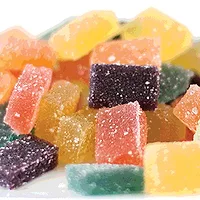PFAS Issues in the Cannabis Industry

Image credit: red2000/iStock / Getty Images Plus via Getty Images
The cannabis industry has seen significant growth in medical and adult-use legalization in recent years. Along with this increased legalization have come increases in both the development and availability of various cannabis-infused products throughout the U.S. Cannabis is no longer sold only in licensed shops. Products containing hemp-derived ingredients—such as lotions and creams, as well as edibles such as gummies—can be found on the shelves of major grocery stores throughout the country.
However, as the industry expands, it is essential to understand the potential risks associated with the presence of potentially hazardous substances throughout the cannabis industry—including but not limited to exposure during cultivation and processing, as well as concerns regarding consumption and use—including per- and polyfluoroalkyl substances (PFAS). Indeed, the possibility of contamination has the potential to greatly impact the cannabis industry, leading to legal, economic, and reputational ramifications.
Although the U.S. Environmental Protection Agency (EPA) has not yet declared PFAS a Hazardous Substance under the Comprehensive Environmental Response, Compensation, and Liability Act (CERCLA),1 that move is expected sometime in early 2024. EPA has announced plans to regulate PFAS chemicals through enforcement initiatives combined with its Strategic Roadmap.2 As public and regulatory attention focuses on PFAS, it is crucial for members of the food and beverage industry to recognize and assess their risk. This article discusses the current regulations and guidelines pertaining to PFAS and how the cannabis industry may be impacted.
What are PFAS?
Per- and polyfluoroalkyl substances (PFAS) are a group of human-made chemicals that have been widely used in numerous industrial applications due to their resistance to water, oil, and heat. PFAS can be found in firefighting foams, textiles, food packaging, and industrial processes. Their persistence and potential health hazards have raised concerns globally. The cannabis industry is no exception to the potential risks of PFAS contamination, ranging from possible health and safety implications to a business' litigation risk.
Regulatory Landscape
In the U.S., specific regulations and guidelines regarding PFAS in the cannabis industry are still developing, with many states adopting their own rules. The EPA has designated two per- and polyfluoroalkyl substances (PFAS) as "hazardous substances" under CERCLA, also known as the Superfund law. These two chemicals are perfluorooctanoic acid (PFOA) and perfluorooctanesulfonic acid (PFOS), including their salts and structural isomers. EPA's expected rulemaking aims to increase transparency around releases of these chemicals and help hold polluters accountable for cleaning up their contamination.
State-Level Regulations
Many states have implemented their own guidelines and regulations to protect consumers of cannabis products from potential exposure to PFAS by way of restrictions in food packaging applications. As of July 2023, 11 states have adopted some form of a law that outright bans or restricts the use of PFAS in food packaging applications, or provides the state with a regulatory pathway to ban or restrict PFAS in food packaging. These states include California, Colorado, Connecticut, Hawaii, Maine, Maryland, Minnesota, New York, Rhode Island, Vermont, and Washington.
Safe Cultivation Practices
Looking for quick answers on food safety topics?
Try Ask FSM, our new smart AI search tool.
Ask FSM →
Adopting safe cultivation practices is an initial (and crucial) step to minimize the risk of contamination in cannabis. This includes selecting appropriate soil and water sources, monitoring and testing for potential contaminants regularly, and implementing proper waste management procedures. Since potential PFAS contamination can enter cannabis products through various pathways such as irrigation water, fertigation, nutrient delivery systems, and soil, this susceptibility to contamination increases the need for regular and ongoing testing to mitigate the possible risks of exposure. By following these practices, growers can minimize the potential for contamination in their products and demonstrate their commitment to consumer safety.
Health Risks and Consumer Awareness
Exposure to PFAS has been allegedly linked to adverse health effects, such as developmental issues, liver damage, and an increased risk of certain cancers. Consumers should be aware of potential PFAS contamination in all products they consume, including cannabis products, and understand the importance of purchasing from reputable producers who adhere to regulatory guidelines. Cannabis producers should regularly analyze both raw materials and finished products for possible contamination to ensure that they meet safety standards and minimize the risk to consumers.
Conclusion
Contamination can pose a threat to the safety and quality of cannabis products, the health of consumers and the environment, and the cannabis industry as a whole. While the regulations and guidelines regarding PFAS in the cannabis industry are still evolving, there is growing recognition of the need to address the potential risks associated with these substances. State-level regulations, along with safe cultivation practices, play a crucial role in ensuring the safety and quality of cannabis products. Additionally, consumer awareness around potential health risks associated with possible PFAS exposure could mitigate potential adverse effects. As the cannabis industry continues to expand, ongoing research and regulatory efforts will be necessary to maintain consumer safety and protect public health.
- U.S. Environmental Protection Agency (EPA). "Summary of the Comprehensive Environmental Response, Compensation, and Liability Act (Superfund)." Current as of September 6, 2023. https://www.epa.gov/laws-regulations/summary-comprehensive-environmental-response-compensation-and-liability-act.
- EPA. "PFAS Strategic Roadmap: EPA's Commitments to Action 2021–2024." Current as of December 14, 2023. https://www.epa.gov/pfas/pfas-strategic-roadmap-epas-commitments-action-2021-2024.








